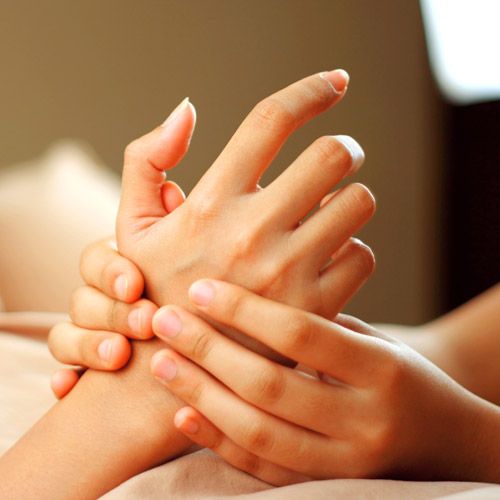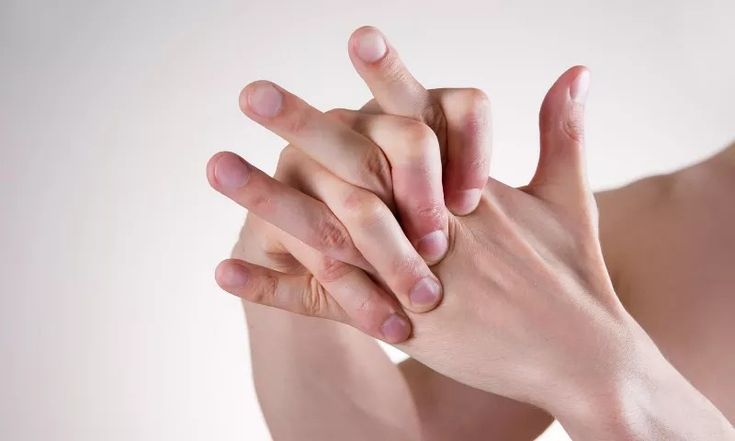Crack. Crack.
Yep! That sound. The one you either can’t stop doing or can’t stand hearing. For some people, it’s the ultimate stress relief, while for others, it’s like hearing nails on a chalkboard. If you are one of those who usually feel that irresistible urge to crack their fingers, this is for you.
Thanks to a viral TikTok with the caption “super secret finger crack,” which gained more than 270,000 likes, finger popping has gone from a nervous habit to an internet obsession.
The hack promises instant joint relief with just a few strategic twists and tugs, and people swear by it. Some even call it life-changing. However, there is one thing: just because it feels good doesn’t mean it is good.
That is where we come in.
In this DIY guide, we are going beyond the viral gimmick. We will explain what happens when you crack your fingers, what the risks are, and how to get that glorious sense of joint relief without risking injury. These are safe alternatives that you can do anytime and anywhere with no dramatic cracks required.
What Happens When You Crack Your Fingers?
You might have heard the rumors about getting arthritis if you keep cracking your fingers. They are wrong; cracking your fingers does not cause arthritis. It is not naturally harmful. When you crack your fingers, the sound you hear is the sound of gas bubbles collapsing in the synovial fluid, that is, the lubricant between your joints.
This fluid allows your fingers to move smoothly. When you stretch or bend your fingers, you are temporarily changing the pressure in the joint, which causes gases like nitrogen and carbon dioxide to be released, creating that familiar pop sound.
In most cases, it isn’t dangerous. However, when people go overboard or use extreme force, they risk straining ligaments, irritating tendons, or even dislocating small joints in the finger. If cracking your fingers involves aggressive pulling, twisting, or hyperextension, then you are on the wrong path. While some people might claim that doing these things brings life-changing relief, doctors have warned that repetitive or forceful joint manipulation can do more harm than good over time.

Why Do People Crack Their Fingers?
People crack their knuckles for several reasons. Some of them include:
- Relief of Tension: That stretch and pop can feel like a mini reset for some people.
- Improved Mobility: Some people feel like they can move their hands more freely after cracking their fingers.
- Habit or Compulsion: For several people, it is just their nature, like nail biting or foot tapping.
- Stress Relief: Oddly satisfying, right? That tiny crack can bring a sense of calm or control.
People have several reasons for cracking their fingers. However, in cases where people think their body needs it, it may not be asking for a crack, but rather a stretch, massage, or movement to improve blood circulation and reduce tightness.
What Are the Risks of Improper Finger Cracking?
Let’s be clear. The casual knuckle pop here and there is unlikely to cause long-term damage. However, methods like the “super secret crack” pose risks when they are done without guidance, especially when you do the following:
- Force a joint past its normal range of motion
- Apply repeated pressure in a way that causes joint misalignment
- Have an underlying joint or ligament issue that you are not aware of.
Many people have reported swelling, pain, or even dislocation from aggressive DIY cracking. And while joint sounds may seem harmless, if they are accompanied by pain, locking, or stiffness, it is a red flag, and you should see a doctor.
Safe and Doctor-Backed Alternatives to Cracking Your Fingers
Do you want that same satisfying relief without any risk? Try these safe alternatives that are DIY-friendly, take just a few minutes, and can be done anywhere with no viral gimmicks required.
- Warm Water Soak
One of the most gentle ways to soothe stiff joints is with a warm soak.
How to do it:
- Fill a bowl with warm water. Not hot!
- Add Epsom salt or a few drops of essential oils, such as lavender or eucalyptus oil.
- Soak your hands for 5 to 10 minutes, and gently flex your fingers in the water while soaking.
Why it works: The warmth increases blood flow and also relaxes the muscles and joints. Many arthritis patients use this trick to reduce stiffness.
- Finger Stretches and Mobility Exercises
Instead of pulling on your fingers, try giving them a gentle stretch.
Try this simple routine:
- Finger Fan: Spread your fingers wide apart, hold them like that for 5 seconds, then relax. Repeat it 5 to 10 times.
- Fist to Fan: Make a fist, then slowly open your hand as wide as possible, make a fist again, and open as wide as possible again. Repeat this 10 times.
- Tabletop Stretch: Place your hand flat on a table, then bend the top and middle joints to make a “claw.” Hold this for 5 seconds.
Extra Tip: Do these stretches after warming your hands up. It will feel more satisfying and help to reduce strain.
- Hand Massage for Joint Relief
A DIY massage can do wonders for tired and tense fingers. Here is how to do it:
- Use your thumb to press gently into the base of each finger on the opposite hand.
- Massage in small circles and work your way up to the fingertips.
- Use a bit of lotion or oil for more effortless movement and added relaxation.
This procedure works because it stimulates blood flow, eases tension in tendons, and can alleviate the urge to crack.

- Use a Resistance Band or Therapy Putty
Physical therapists often recommend resistance exercises to maintain the health of finger joints.
How to do it:
- Get a therapy putty or use a soft rubber ball
- Squeeze the ball/putty and release for 10–15 reps
- Or use a small resistance band to stretch your fingers outward.
This works well because these movements help to strengthen the muscles around your joints, which helps prevent stiffness and reduces the urge to “reset” them with a crack.
- Try Acupressure or Reflexology Points
Acupressure is not just for back pain. There are specific points on the hands that are linked to joint and muscle tension relief.
How to do it:
- Press the area between your thumb and index finger. This is called the Hegu point. Do this for 30 seconds
- You can also gently massage the base of each finger in small circles
However, when doing this, you have to be cautious. Always be gentle. Acupressure should never hurt or cause numbness.
After All of This, What if Your Fingers Still Feel Tight?
If you regularly feel like your fingers are stiff, tight, or uncomfortable, it may be more than just a habit. Some reasons for this may include:
- Dehydration: When you don’t drink enough water, it can cause joint stiffness.
- Lack of Movement: Long hours at a desk or on your phone can lead to poor circulation of blood in your hands.
- Arthritis: Joint pain or stiffness that lasts or worsens should be checked by a doctor.
- Repetitive Strain Injuries (RSIs): This is common in people who type, sew, or text frequently.
In these cases, stretching and massaging your fingers can be helpful, but it is also worth consulting a physical therapist or hand specialist.

You Do Not Have To Crack Your Fingers To Feel Good
Let’s face it, cracking your fingers can feel amazing. But, as the “super secret crack “ that went viral shows us, the internet does not always get it right when it comes to your health. Just because something went viral does not mean it is safe for your joints. However, there is good news.
The good news is that there are plenty of safe and satisfying ways to get that same sense of relief. From gentle stretches to warm water soaks and hand massages, your fingers will thank you for taking a kinder approach.
So, the next time you feel that itch to twist, pull, or snap, try one of these doctor-backed methods instead. Your joints may not make a popping sound, but they will feel better in the long run. Below is the DIY joint relief checklist made just for you:
DIY Joint Relief Checklist:
- Daily finger stretches (5 minutes)
- Warm hand soak (2–3 times/week)
- Hand massage with lotion
- Therapy putty or resistance bands
- Stay hydrated and move often.
